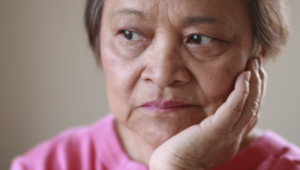If older adults tell you they’re feeling blue, don’t shrug it off as a normal part of the aging process. They may be suffering from geriatric depression–a treatable medical condition that’s sometimes overlooked.
It’s important for health and human service providers to understand the relationship between geriatric depression and chronic conditions, according to UW-Madison’s Suzanna Waters Castillo. The complexities of these conditions can mask an older adult’s mental distress, which may result in not being treated. The Centers for Disease Control and Prevention has found that about 80 percent of older adults suffering from depression can benefit from evidence-based screening tools and treatment, such as anti-depressants and cognitive behavioral therapies.
Health and human service professionals can learn about screening and treating older adults with mental illness in UW-Madison’s Mental Health and the Older Adult Certificate Series. For more information, watch the video (above) or contact Waters Castillo at 608-263-3174, scastillo@dcs.wisc.edu.
About 9 percent of American adults from all walks of life suffer from some form of depression. For what i believe, where you live has an effect on your risk of depression.This may reflect other influences on depression, such as access to health care in the area, the population’s education level, and opportunity for employment.
Hello Shawn,
Yes, I agree with your comment that environmental factors such as socio economic status, educational attainment, access to health care, ethnicity etc. are factors that may contribute to depressive symptoms and clinical depression.